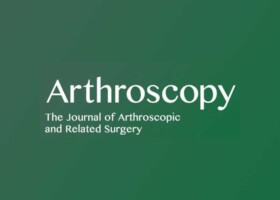
Authors:
Ryan J Warth, Grant J Dornan, Evan W James, Marilee P Horan, Peter J Millett
Abstract:
Over the past decade, research has focused on enhancing the biomechanical properties of various rotator cuff repair constructs in an effort to improve the potential for tendon-footprint healing. Despite these improvements, retear rates have been persistently high regardless of the repair technique. Given the high rate of structural failure at the tendon- bone interface, successful rotator cuff repair is more likely to be reliant on the biological characteristics of healed tissues rather than the biomechanical strength of the repair construct.
After rotator cuff repair, it has been shown that the fibrovascular scar tissue deposited at the tendon- bone interface is inferior in quality to that of the native enthesis. This factor may partially explain the high rate of observed retears at the tendon-bone interface after rotator cuff repair and the subsequent decline in clinical outcomes. As a result, recent research has focused on the development of biological materials designed to enhance the strength and quality of repaired tissue at the tendon footprint.
Although many investigators have identified and studied the various biochemical signaling cascades involved in rotator cuff healing, an important study by Rodeo showed that isolated osteoinductive growth factors, specifically recombinant human bone morphogenic protein, could be used to improve the tissue quality at the site of rotator cuff repair in sheep. Others have shown that fibroblastic growth factor 2 may accelerate the remodeling process while also helping with the formation of granulation tissue. Because many other growth factors are also released from the alpha granules of activated platelets in physiological concentrations, it is theorized that the application of a biological material rich in platelets may help stimulate the development of normal-appearing histologic tissue characteristics at the repair site, decrease retear rates, and improve clinical outcomes after rotator cuff repair.
Several prospective comparative studies have examined the clinical or structural outcomes after the integration of various platelet-rich products (PRPs) with rotator cuff repairs; however, the results have been conflicting to date. As a result, controversy exists regarding the clinical efficacy of PRP supplementation during arthroscopic rotator cuff repair. Therefore, the purpose of this study was to perform a systematic re- view, meta-analysis, and meta-regression of all the Level I and Level II studies comparing the clinical or structural outcomes, or both, after rotator cuff repair with and without PRP supplementation. We hypothesized that there would be no statistically significant differences in clinical or structural outcomes between treatment groups.
For the complete study: Clinical and Structural Outcomes After Arthroscopic Repair of Full-Thickness Rotator Cuff Tears With and Without Platelet-Rich Product Supplementation: A Meta-analysis and Meta-regression
